I’m a little later than usual getting my “year in review” list up this month. 2011 was my first year working full time in the games industry, and I expected the idea of “making games means playing less games” to apply. It didn’t apply all that much in the end – maybe I played games for less time, but I still played a lot of different ones. If this is your first time reading one of these lists, let me preface it like I always do: I’m not an expert critic, and this is mostly an exercise for me to analyze my own gaming habits. I share it publicly so my peers can better frame my background and biases as a designer/producer/geek. With that, onward!
Anomaly Warzone Earth (PC)
Nifty take on “tower offense.” The formula grew a bit stale for me on PC because I felt like I didn’t have enough to do while I was waiting for my troops to reach the towers, but that might feel better on the iOS version where touching and panning is a bit more action-heavy than dragging a mouse.
Atom Zombie Smasher (PC)
The first of many Humble Indie Bundle pickups on this list, Atom Zombie Smasher is a charming top-down defense game. The presentation value sells the experience, much like in Firemint’s Flight Control. It’s a fun time-waster, worth the price of admission, but it doesn’t bring anything new to the genre so I don’t think I learned much from it as a designer.
Barkley: Shut Up & Jam Gaiden (PC)
Fantastic indie RPG that took me way too long to get around to playing. It’s absolutely hilarious from start to finish and features a battle system that rivals the Paper Mario games. You don’t have to be a sports fan to appreciate an epic drama in which the events of Space Jam are considered canonical.
Batman: Arkham City (PC)
It’s like Arkham Asylum, but more Batman-ier in all the right ways. Arkham City was probably my “game of the year” in terms of moment-to-moment joy while playing it. Again, like Saboteur and Assassin’s Creed, it gave me a map with a ton of dots on it, and I couldn’t rest until I had found them all. My only recommendation is to play it on console instead of PC – it’s quite buggy and isn’t worth futzing with the broken DX11 and Games for Windows Live features.
BIT.TRIP.RUNNERÂ (PC)
This is really a rhythm game disguised as a “run forever” game. It’s one of the most unforgiving runners out there – the levels aren’t procedurally generated, Â so if you screw up, you end up replaying the same stretches over and over again. It can get frustrating, but not in a terrible way. I intend to go back to it at some point.
Cave Story+Â (PC)
This very loosely fits “HD remake” Â criteria, but on the flip side, it’s the first opportunity to pay money for one of the best indie games ever made. I played the original Cave Story a while back and this version feels a bit more playable. It’s up there with other classic sidescrollers like Super Metroid and Mega Man in my book. Is there enough to warrant a playthrough if you’ve already played the original? Hard to say.
Child of Eden (Xbox 360 / Kinect)
I appreciated Rez but never loved it. I can’t even appreciate Child of Eden. I thought the gameplay consisted of waving my arms against the backdrop of an acid trip in addition half of the mechanics from Rez.
Civilization VÂ (PC)
OK, I’m embarrassed. This was my first Civilization game. It’s just one of those franchises that, for whatever reason, I never got around to playing for myself. I played this one pretty front-heavy, going about 25 hours in my first week and then never touching it again. The pacing is a bit too slow for my liking but the strategy elements of the game are fantastic. I want to play it multiplayer, but I don’t have a group of friends that will sit and play with me for 12 hours (like Risk).
Deadly Premonition (Xbox 360)
A lot of people said this game was “so bad it’s good” in a B-movie kind of way. I got the bad part, at least.
Dead Space (iOS)
Dead Space’s controls are a pretty impressive blueprint for 3rd person shooter controls on a touch screen. I transitioned to it after completing Dead Space on the Xbox 360 and I was right at home after a few minutes of experimenting with it. The game’s design leaves a lot to be desired – it’s rather formulaic, and if Doom 3 was faulted for having a lot of monster closets, Dead Space for iOS has monster rooms connected by corridors full of monster closets. Literally every other room in the game will close up with flashing red lights and throw waves of necromorphs at you that must all be defeated before you can continue. Those segments work OK in moderation, but it doesn’t fit the survival horror theme too well.
Dead Space 2Â (PlayStation 3)
Dead Space 2 is a perfectly competent sequel. It’s highly polished and upgrades enough mechanics from the original game to feel fresh. It’s not quite the kind of jump I saw between the first two Uncharted games, but that’d be a lot to expect. Visceral made a third person survival horror shooter and beat Capcom at their own game – when I forget Resident Evil 5 happened and consider Dead Space 1 and 2 to be RE4’s proper sequels, I’m a much happier person. One thing in particular that Dead Space 2 does better than the original is crafting unique atmospheres. A children’s daycare opens up into the silence of deep space. A quiet, eerie church leads into a marketplace where humans are frantically running for their lives. The game’s action sequences and shooting mechanics are good, but they wouldn’t be anywhere near as compelling without the awesome environments to explore. I appreciate their willingness to invest in new environments over new enemy types because enemies aren’t nearly as scary after you’ve figured out how to beat them for the first time.
Deus Ex: Human Revolution (Xbox 360)
This is a case of a game catering to my preferences so well that I don’t finish it. I’m super deep in sidequests and as a completionist it’s hard to move forward when I risk failing a quest that I can’t go back and do later. I’ll have to pick it up again soon. Maybe.
Dungeon Defenders (PC)
My experience with Dungeon Defenders went something like this: a friend of mine said “GO BUY THIS” and I said “OK” and then I logged in and played a game with his team and 45 seconds later my character gained 16 levels. I had absolutely no idea what was happening. I gave it another chance and started to learn the mechanics for myself, and now I can actually have fun with it. It’s only fun if you play with friends, but if you start off playing with friends, it’s really confusing because the XP system is completely broken.
Enslaved: Odyssey to the West (Xbox 360)
A lot of people berated this game for being an Uncharted ripoff. Naughty Dog’s recent hire of Enslaved’s design director tells you all you need to know about what they thought of the game. It’s not as good as Uncharted 2 but it’s absolutely worthwhile. From a story perspective, the game is probably stronger. The combat is a lot of fun and the environments are interesting enough to keep my attention. There were a few areas where I felt stuck (puzzles, bosses, etc) and the game didn’t help me along as much as I’d like, but considering it’s for a hardcore audience to begin with, that isn’t a total deal breaker. That lack of extra polish prevents a good game from being great.
The Gunstringer (Xbox 360 / Kinect)
If anyone tells you Kinectimals is the cutest game on Kinect, they haven’t played Gunstringer. The mix of live action and animated puppeteer scenes has a really cool effect. Unfortunately, my elbows started hurting about three levels in because I guess I take the pistol shooting motion a bit too seriously. That’s certainly a disadvantage to lots of motion controls – they punish the player for getting really into the game with arthritis.
Groove Coaster (iPhone)
Finally, a rhythm game for the iPhone that doesn’t suck. The music isn’t great – it’s a lot of j-pop, electronica, and garbled remixes from various Namco and Taito games, but it’s a good deal of fun to tap, hold, and drag along with the beats. I had absolutely no idea how the different ships and power ups worked, and I feel like I missed about half the game as a result, but it’s hard to complain when I got hours of enjoyment out of 99 cents.
Hanging with Friends (iPhone)
I find that hangman has considerably less appeal than Scrabble, so I don’t play this nearly as much as Words with Friends. The in-game items feel like cheating to me, and I feel dirty when I cave in and use them. It maybe takes the F2P model a bit too far for my liking. I still played it regularly for about four months before falling off, so props to Zynga. I just haven’t come back to it like I do Words with Friends.
The Heist (iPhone)
Super polished game with very little substance. The presentation is immaculate – “mission†updates are given to you by simulated phone calls that mimic the iPhone’s normal UI. The actual gameplay is a compilation of four different games that could probably be found in the free section of the app store, but everything else is so slick that I don’t question my purchase.
The ICO and Shadow of the Colossus Collection (PlayStation 3)
I tried starting ICO again since I never finished it on PS2, but I didn’t finish it on PS3 either. I hopped into Shadow of the Colossus to play around for five minutes and put it down a few hours later. The framerate problems of the original are gone and that’s enough to make it worth another playthrough. It’s also the single-best reason I’ve found to own a 3DTV so far: the sense of scale created by the 3D effect in the overworld is really awesome, and some of the colossi battles feel even more spectacular.
Infamous 2Â (PlayStation 3)
I couldn’t get into Infamous 1. I got through about an hour and a half of Infamous 2 before putting it down. I don’t know if it’s the camera, the combat, or what in particular I dislike about the series but it just doesn’t do much for me. I should probably do a decon on it at some point to see if I can figure it out.
Infinity Blade (iPhone)
For all the hype around Infinity Blade, I found the gameplay to be really bland. Sure, it’s pretty, but amazing 3D graphics don’t make a good game. Lots of people really like it, but it seems like a game about grinding to me. I don’t like many MMOs in part of the grinding either, though.
Jetpack Joyride (iPhone)
I picked this up after it went free because the description didn’t excite me – after all, I can only play so many endless running games in a year before I get sick of the formula. Turns out I was just a bit wrong – I’ve invested more time in Jetpack Joyride than any other iOS game this year, with about 14 hours in the month of December alone. The game’s presentation couldn’t be much better and it’s super polished. The addition of temporary vehicles and power ups to the runner formula make it feel new again, almost like a Halo to the last gen’s Goldeneye. Halfbrick is the team to beat when it comes to simple, addictive mobile games, and I’m anxious to see what they do to follow this up.
Killzone 3Â (PlayStation 3)
I played Killzone 3 about as long as I played Killzone 2, which is about an hour. Something about the way Guerrilla Games designs their introductions totally turns me off. I’m not terribly interested in the story, all of the characters look/sound the same to me, and the gameplay doesn’t stand out much from its competitors. I have the same problem to a lesser degree with the Resistance series. One of the problems with my experience might have been the insanity of my setup: using the PlayStation Move controller guncon with 3D glasses felt pretty ridiculous.  The production value and AAA-ness of these games can’t be denied and I probably should just accept it’s not my genre.
L.A. Noire (PlayStation 3)
Yet another game I really wanted to like but couldn’t get through. The art and facial animations are as good as everyone says, but the gameplay is nothing short of boring. The detective mode feels like a poor man’s Heavy Rain and the driving has the trademark Rockstar Games DrunkOSteering that make you feel like even the smallest compact is a motherfucking semi. The interrogation scenes are a complete joke – they make the cycles between facial animations super obvious so you can tell when someone is lying. Someone wanted to make a movie but they made a game instead, and an entire studio suffered for it.
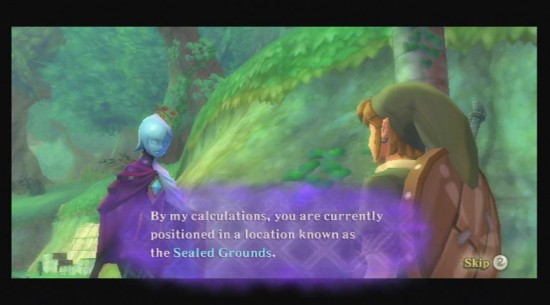 The Legend of Zelda: Skyward Sword (Wii)
The Legend of Zelda: Skyward Sword (Wii)
This is a game I really wanted to like. Skyward Sword initially looks and feels so much better than its cousins, but it quickly devolved into repetitive fighting with bad motion controls and slow crawling text. It also seems like Nintendo took the internet’s “LOOK, LISTEN” Navi memes and thought it meant we wanted more of it…because there’s a whole lot more of it. The game makes annoying pings and alert tones until you give in and allow it tell you something painfully obvious by way of precanned animations and more slow crawling text. For example, the above moment happens after the name of the new area has been displayed onscreen for about five seconds during an unskippible intro scene. Complete disregard for the player’s intelligence and time is a massive design failure that can’t be forgiven, even if it is part of a sacred franchise. Zelda games are stuck in the past and they need to at least start trying to compete with contemporary adventure games if they want to continue to be relevant.
League of Legends (PC)
I’ve got a decon on the way for League of Legends, but in the meantime, I’ll leave a few thoughts: I had no desire to start playing a DotA game this year, and I ended up investing more time into LoL than anything else. It’s my go-to multiplayer game and I have more friends who play it than anything else. I’ve also invested money into it despite being free to play. It seems Riot accomplished most of their design objectives and I’ll keep playing into 2012.
Little King’s Story (Wii)
A charming non-RTS akin to Pikmin meets Animal Crossing. Little King’s Story offered just the right amount of micromanagement for this genre. It constantly reminds you how Japanese it is, but it never tells you why it’s on Wii – it uses all of the buttons on both the Wiimote and the Nunchuck, but it doesn’t use the cursor or any motion controls whatsoever. It would have been better with a DualShock. Hopefully this will get re-released on PSN or XBLA so it can get a proper audience.
Lost in Shadow (Wii)
Winner of my award in the competitive “most clever use of shadows in a sidescrolling platforming game on the Wii” category, Lost in Shadow is a platforming game that cleverly uses shadows and gives 2.5D some meaning beyond a graphical style. The player controls a shadow and can only walk on shadows, so moving around light sources can completely change a room’s layout even though the foreground may remain the same. The difficulty curve is questionable, but it’s one of the most original titles of 2011 and worth a look if you can come to terms with dusting off your Wii.
Kung-Fu Rider (PlayStation 3)
My experience with Kung-Fu Rider was summarized by the “results” screen after I completed the first level, where the game displays pictures taken with the PS Eye camera intended to show how much fun you’re having. What I saw was my horrified face looking back at me, wondering what the hell I was doing. It hasn’t spent much time in the disc tray since then.
The Maw (PC)
Although I’ve been a pretty big fan of Twisted Pixel’s ‘Splosion Man, I never really got around to playing The Maw until last summer. It feels a little clunky - reminiscent of the middle era N64 platformers – but the cuteness of the characters makes it interesting enough to watch. The core gameplay is derivative of a number of other titles with buddy-buddy concepts, but it’s presented so well that it feels fresh. The puzzle design could have been better and it’s awfully short, but it is just a $10 game. Biggest design takeaway from this one was making memorable characters without using any dialog.
Mafia Wars 2 (PC / Facebook)
I have a bunch of friends at Zynga, and I check out the games they work on as they’re released. Mafia Wars 2 was one of those games. Although it keeps many of the CityVille / FarmVille mechanics, it also marks a significant departure from the standard Zynga compulsion loop. Play sessions last longer before you get blocked by energy requirements, and a variety of quests offer a sense of progression that the other games don’t have. Each individual system feels rather polished, but they aren’t stitched together in an obvious way. Much of the game’s systems can be enjoyed independently – building up your own turf, fighting other players, or completing missions are all valid ways to move forward. To some extent this lets players pick their own play style, but the systems aren’t compelling enough on their own for long.
Minecraft (PC)
Minecraft is a game about building things with blocks that destroys lives and ruins relationships. Check it out.
Ms. Splosion’ Man (Xbox 360)
Ms. ‘Splosion Man had the best opening of any game in 2011. I kept playing until I quit laughing, which wasn’t until about three hours in. I found it to be a lot tougher than its male counterpart from 2009, but It’s still a blast. Oh, dammit.
Oddworld: Stranger’s Wrath (PC)
I missed out on the Oddworld games when they were released, so I picked up the Oddbox on Steam to check ’em out. Stranger’s Wrath was a pleasant surprise. I’ve seen it described as a love-it-or-hate-it kind of game, in part because it’s different from the other Oddworld games and in part because the controls are so different from any other game. It successfully employs a first AND third person camera, and requires the player to constantly switch between them. There’s a definite learning curve but it’s also proof that such a system can work. The weapons are super inventive too. Every part of this game was somewhat memorable, but perhaps that was because it was my first Oddworld experience.
Outland (Xbox 360)
I really wanted to love Outland. It’s the bastard child of Ikaruga and Prince of Persia stuffed into a Metroidvania game. The art style is absolutely beautiful, but the game stalls after the first hour and a half or so. The puzzles go from being clever to being unnecessarily difficult, and it begins to feel like the developers ran out of mechanics. I might go back and finish this one eventually, but I’m only willing to invest a certain amount of effort into difficult platforming sections when platforming isn’t your game’s primary focus.
Orcs Must Die (PC)
It’s rare to see a tower defense game with so much character in any given year, but 2011 gave us two. Orcs Must Die is essentially a single-player only Dungeon Defenders with better animations, more imaginative towers, and a lot more levels. Although it’s hard to play one without comparing it to the other, I found both games to merit a playthrough on their own.
PAYDAY: The Heist (PC)
PAYDAY felt like Left 4 Dead without a soul. Maybe I’m getting a bit soft, but replacing zombies with cops bothers me when I can recognize the formula as something that usually has zombies. Some of the levels were well-designed, but most of the mechanics they introduce to the formula are ho-hum at best. Something feels arbitrary about the design when your equipment jamming is more dangerous than a SWAT team spraying you with fire.
PlayStation Move Heroes (PlayStation 3)
Where on earth did this come from? A game featuring the protagonists from all the best Sony platformers seems like a win on paper, but Heroes is doomed from the start with an unnecessarily complicated control scheme. It’s essentially a mini-game collection with a loose story that stitches together the different events…but even as a mini game collection, it doesn’t stand up to Sports Champions on its own platform.
Portal 2Â (PC)
Some people said the single player campaign was too short. I think it might’ve been a little too long. The co-op was just right. Not much to say here because if you’re taking the time to read a developer’s blog, you’ve probably already played it. If not, why are you wasting your time reading this?? Portal 2 is one of those games that everyone should play.
Rayman Origins (Xbox 360)
This game could also be sold as “joy on a disc.” In fact, it might have sold better that way. It’s a quirky niche title – like most Michel Ancel games – and it’s an absolute blast for anyone who isn’t scared about the prospect of a 2D platformer being released as a full price retail game. The inventive level design is surpassed only by the hand-drawn art style. I wish it had online co-op so I could actually finish a co-op session of the main game, but that isn’t a reason to skip out on one of 2011’s best titles. I’m thrilled to see Ubisoft taking risks like this as a developer and publisher, and I’m deeply saddened it wasn’t financially successful.
Revenge of the Titans (PC)
Cute tower defense game with a pseudo retro style. Another Humble Bundle pickup, another game devoid of innovation but full of polish and hours of fun that justify owning it.
The Sly Collection (PlayStation 3)
I missed out on the Sly Cooper games back on the PS2, but as a fan of platformers and stealth games, I picked up the collection shortly after it came out. I was surprised that the game is rather unforgiving in earlier levels, given its kid-friendly appearance. But as someone who develops kid-friendly games, I appreciated the amount of depth in the gameplay. It’s every bit as good as the Jak and Daxter games, but perhaps not as good as Ratchet & Clank.
Sonic CDÂ (iPhone / Xbox 360)
As a longtime Sonic fan, I picked up this “port” on both platforms. I hesitate to call it a port since it was a complete rewrite with a new engine, but hey – the backstory behind its development is almost as enjoyable as the game itself. It controls surprisingly well on a touchscreen, but when I played to get all the achievements and a full completion I used my Xbox controller. I’d love to see more classic games revitalized in this style.
Sonic Colors (Wii)
For those not in the know, I used to be a huge Sonic fan. I ran a pretty big Sonic website back when I was in middle school but couldn’t stay interested after Sega released a series of absolutely terrible games after the turn of the millennium. Every time the media says “this game is a return to Sonic’s roots,†I’m tempted to check it out, and Sonic Colors eventually became too tempting to pass up. It’s not bad. It’s better than any other 3D Sonic game before it, but it’s not without its annoyances. The 2D sections are well thought out and the new power ups actually add something to the experience. The 3D behind-the-back sections are still problematic thanks to the use of the Wii Remote’s d-pad, but it works a bit better with a retro controller. Games should not use digital input for 3D movement. It doesn’t work – I thought we figured this out back on the PS1, but apparently some people at Sonic Team have forgotten. Still, I think most games would be entertained enough by Colors to make it worth grabbing from a bargain bin.
Sonic Generations (PlayStation 3)
If Sonic Colors is “OK,†then Sonic Generations is “good.†It still has some flaws with “death by camera†and other silly issues that have plagued the series for years, but Sega essentially made two good games here instead of one great one. Parts of the game’s design seems kind of dangerous on paper – it alternates levels that use two different control schemes with the same character – but the presentation is slick enough to make it flow somewhat seamlessly. I picked it up and launch and have no regrets – it’s probably not as enjoyable if you don’t have the nostalgia factor for all the old levels, but it’s still a very solid effort and I’d be perfectly happy to buy more Sonic games with these controls.
Sports Champions (PlayStation 3)
Sports Champions might’ve been a good game if it was possible to play it without comparing it to Kinect Sports. As it stands, it feels rushed and kind of empty. Only a handful of the games are worth playing more than once. Bocce ball is fantastic, frisbee golf is pretty good, and I could see myself maybe playing ping pong again, but aside from that, it seems more focused on showing how the Move controller is different from the Wii Remote than it does being a good game. Whereas you have stadiums full of colorful characters cheering for you in Wii Sports and Kinect Sports, Sports Champions’ levels take place in empty outdoors environments where you hear nothing but birds chirping and the occasional wind gust. Could be great for an exercise game, but for a party game, I tend to want a little more excitement.
Terraria (PC)
It’s 2D Minecraft! It’s 2D Minecra–oh, wait, it’s actually more than that. Terraria is like Minecraft meets Castlevania, with a bigger focus on exploration and combat than building. In fact, I almost completely ignored the building in Terraria despite exclusively building in Minecraft. Shows what just a few design differences can do to differentiate a game from the ones that inspire it.
Tiny Tower (iPhone)
This was the only social game I played for more than a few days this year. I kept up with Tiny Tower for about a month. The visual assertion of growth found in building a vertical tower  was highly satisfying – I always felt like I knew exactly what my goal was and how I could achieve it – and the micromanagement of each resident was also a welcome change from other games that replace that kind of depth with an opportunity to make you invite real world friends. Tiny Tower stands a strong iPhone title regardless of whether or not you put money into it and doesn’t feel like a cash grab nearly as much as some of its competitors.
Tiny Wings (iPhone)
This game was my go-to time waster on iOS for the first half of the year. It’s also a really cool indie success story – one guy makes a game alone and it skyrockets to the top of the appstore, making him set for life. The art is nauseatingly cute, the music is catchy, and the gameplay is tight. You can’t ask for much more in a 99 cent game.
Uncharted 3: Drake’s Deception (PS3)
Since moving to LA, I’ve made a bunch of friends at Naughty Dog and I saw firsthand the sweat and tears that went into making Uncharted 3. It’s an absolutely beautiful game and offers thrills from start to finish. I think they went overboard in a few areas – I often feel like Drake is drunk when controlling him in crowded areas, where he puts his hands on everything in sight – but if you’re looking for an immersive, cinematic experience, you can’t do better than Uncharted. It’s much more of a playable movie than something like Heavy Rain and has amazing technical merits to go along with it. Â The gunplay is fun, the puzzles are well-designed, and, as with its predecessor, the multiplayer is surprisingly deep. Like the summer blockbusters it mimics, it lags a little bit towards the end, but finishes with a bang and leaves you with a smile on your face.
Vanquish (Xbox 360)
I played about three hours into Vanquish on its “hard” difficulty and had little trouble until hitting a particularly tricky boss. After about 20 tries, I reluctantly lowered my difficulty level to “medium” – forfeiting my achievements for the playthrough – and tried again. It didn’t seem any easier. I lowered to “easy” and still couldn’t beat it. Hitting a brick wall like that is just about the worst thing I can experience in a game, which is a shame because Vanquish was a lot of fun up until that point. The game is super polished but it’s hard to go back to when I put it down at such a low point.
VVVVVV (PC)
This indie darling was clever, and had some tough-as-nails puzzles, but like Super Meat Boy I fail to see the appeal for more than a few minutes. Maybe that’s why it’s $5? I have a lot of respect for the dev, but I’m not terribly excited about these kind of games because they pass “crazy difficulty” off as “good design.” Yes, the game is designed reasonably well, but the best design is found in games that take complicated puzzles and make them accessible (read: Portal, World of Goo).
World of Goo (iPhone)
Like Plants vs. Zombies, I find new ways to buy World of Goo every time it comes out on a different platform. I’ve actually bought this one twice – the SD version on my 3GS and the HD version on my new 4S. It’s already a classic as far as I’m concerned, and I go back to it whenever I want to relive a lesson in the joy of simplicity. And it’s only $0.99!

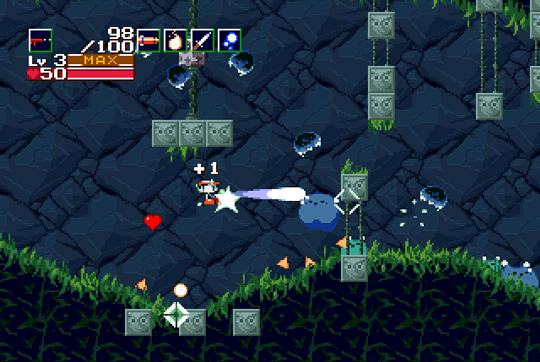
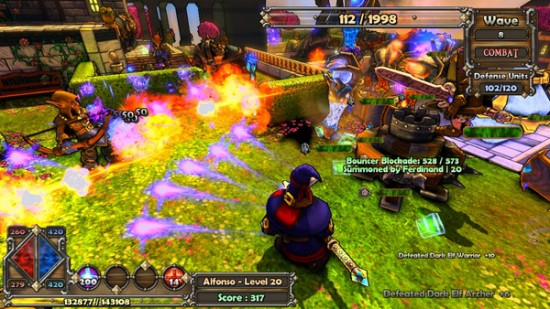
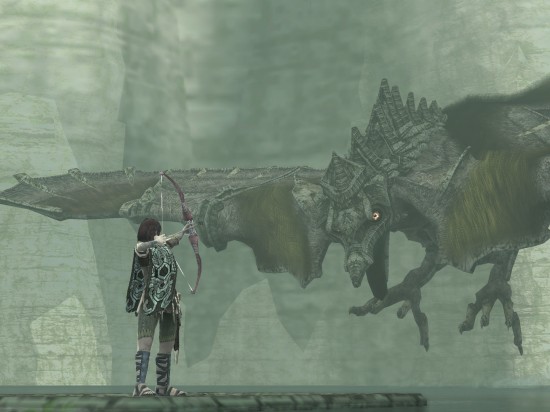
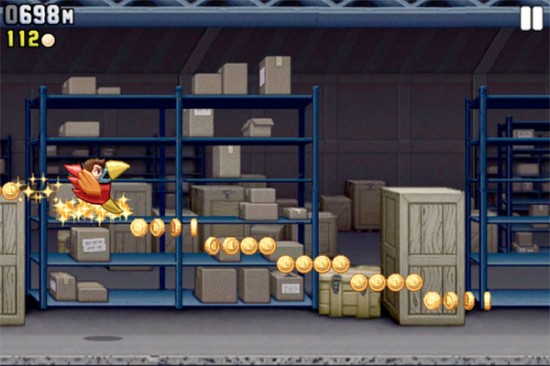
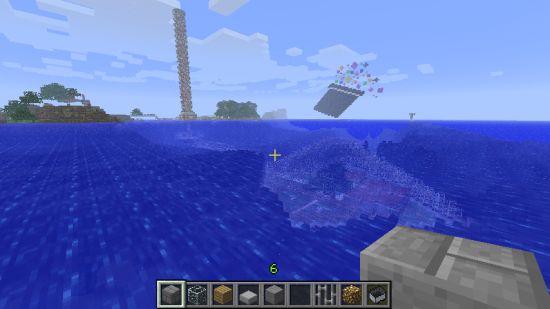
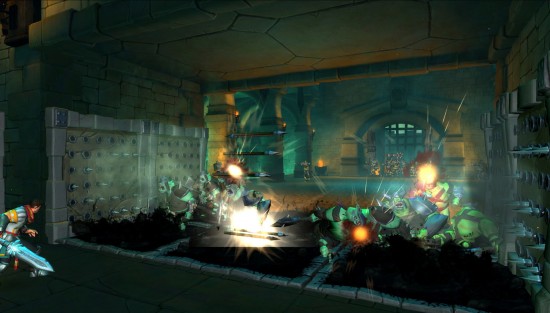
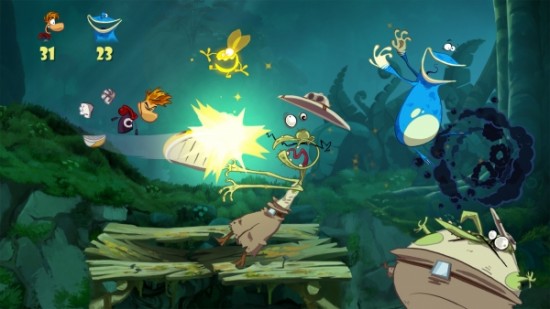
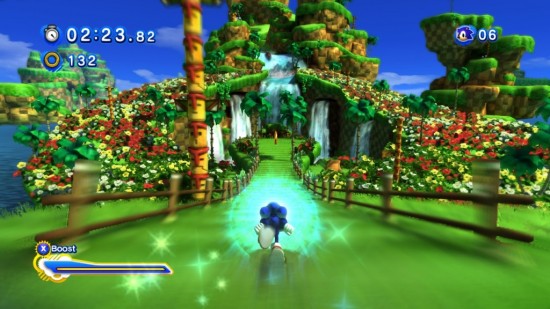


near the university of hawaii, there is a foodstuff truck with plate lunches. i don’t know the identify; i’m not guaranteed when they use a indication with their brand!
Hey there! Your website is running lagging , the site went on just like
a minute or so in order to reload, I dont know if it is just simply me or
maybe website however , google and yahoo worked fine for me.
Nevertheless, I’m going to thank you so much for including beautiful
post. I assume this has been beneficial to many individuals .
This one is actually great everything that you have implemented and wish to discover awesome posts from your website.
Right after checking out the articles, I have bookmarked your web page.
I must say you have hi quality posts here. Your posts can go viral.
You need initial traffic only. How to get massive traffic?
Search for: Murgrabia’s tools go viral
Hello, its fastidious piece of writing about media print, we all be familiar with media is a impressive source of data.